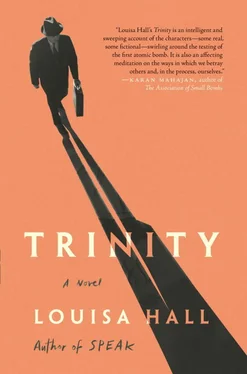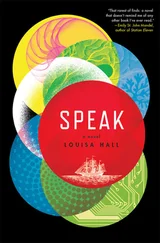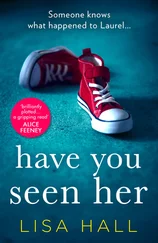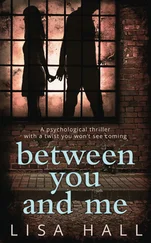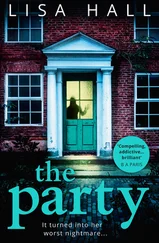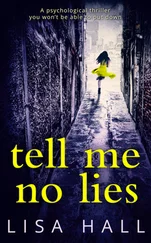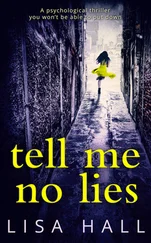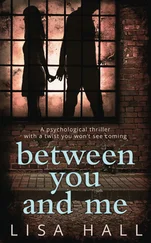To fix that nauseating liquidity, and to get back to my usual capable self, so that I could better take care of our child, I attempted to reconstruct the solidity of our previous life.
To that end, once summer had arrived, I returned to examining what happened between my husband and that woman who’d called me, but whom I’d never gone to see in her hotel room. It seemed to me that I had to figure out exactly what happened, in order to return to my normal existence.
I had to see it clearly and completely, to know what I was putting behind me.
As a first task, therefore, I worked to weigh out and correctly distribute the blame. This, however, proved to be a trickier business than I’d originally expected. Some mornings, I felt that my husband was entirely to blame, he having chosen to lie in the first place. Other mornings, however, I felt that it was the disproportionate violence of my initial reaction that had caused such an irreparable rift in our marriage.
It seemed to me then that it was the brutality of that first response—confronting him so directly on the back porch; attacking him with my prying questions—that had dissolved the structure of our life together, changing him, and changing me, and altering the life we’d constructed.
I shouldn’t, I told myself, have treated that lie as such a disaster. In the scheme of things, I said to myself, what did some careless fling really matter?
I rebuked myself for dramatizing such a small thing, which wasn’t, after all, an offense on the same scale as something like murder. He’d only, I told myself, slept in some other bed, beside some other body, and if he lied about it, he only did so to protect me.
THESE WERE THE STRUCTURES OF LOGIC I BUILT, IN THE ATTEMPT TOshore up our life together. And for his part, my husband did what he could to help. He took more responsibility for our child. He woke before me, so that I could sleep later. He walked, holding our baby, up and down the block outside our house, trying to persuade him to cease crying.
At parties, with friends, my husband no longer reached for my neck. He stood beside me, somehow disarmed, and somehow smaller, blinking around the room in confusion.
He had been altered, in other words, but he did what he could to help me reconstruct the old sketch. And I tried to devote myself also. In some ways, I tried more determinedly than before. But the truth is, I no longer had faith that the portrait was coming together. No matter which details I added, no matter which techniques I employed, his face never quite came to life.
This blankness in the portrait I’d drawn of my husband was compounded by the fact that I also couldn’t picture the woman he’d loved—or simply slept with—in Chicago.
I knew she had a brother who died, but I didn’t know anything else. I’d never gone to her hotel room, so I didn’t know what she looked like, and in the absence of recognizable features, she haunted me more than she otherwise might have.
What was she like? I wondered, when I was nursing our son, sitting with the small weight of him in the darkness.
Was she tall, or short? Was her hair dark, like mine, or was it light, and did she have a hard face, or was it soft, and if I saw her would I feel for her and wish I could help her?
THE FACT THAT I KNEW SO LITTLE ABOUT HER BEGAN TO BE GALLING.I realized that she knew far more about me than I knew about her. She’d found, for instance, the phone number of my house. She’d known my name. She must have known, therefore, my address. And perhaps she’d driven by on her way to that hotel, where she waited for several days to see if I’d come.
Perhaps she’d driven down the back alley. Perhaps she’d seen me on the back porch.
The inequity of that situation—that her featurelessness should be so haunting for me, while for her I was a simple collection of facts—struck me as cruel. That basic unfairness began, in fact, to seem like the root of the whole problem, and so with my husband, I began a new system of interrogation, one that moved beyond blame assignation and attempted to pin down the features of his relationship in Chicago.
I felt that once I could imagine the scene, the mystery would no longer haunt me.
Then, I thought, I’d finally put it aside, as you might put down an interesting book, having turned the last page, and having closed the back cover, giving it the brief moment of silence you’d give a good book before returning it to its rightful place on the bookshelf.
TO THAT END, SHYLY AT FIRST, THEN MORE AND MORE BOLDLY, I INTERROGATEDmy husband. With each new series of questions, I tried to collect all the facts that I’d missed in previous sessions, which, upon reconsideration in the light of the next day, when my husband was at work and I was pacing around with our child over my shoulder, always seemed full of holes, and oddly uninformative: less like the transcripts of interrogations, and more like stories told without endings, more haunting and insistent because they weren’t ever finished.
To correct this, I tried to develop better interrogation techniques.
Sometimes, at night, when he’d come home from work and we’d put our son to bed, I asked my husband to repeat the story of his infidelity in Chicago. Then, immediately after he’d finished, I’d ask him to repeat the same story, looking for discrepancies in the second retelling.
I’ve heard, since then, that this is a technique employed by prison interrogators in totalitarian states. It’s the same technique that was used on Oppenheimer in the months and years after that fatal trip to San Francisco, when he was asked by his handlers at Los Alamos, and Lieutenant Pash, who led the San Francisco G-2 office, and General Groves, who was the general in charge of the Manhattan Project, and the prosecutors handling his security hearings, to repeat again the same story of that visit to San Francisco, when he spent the night with Jean Tatlock, or to repeat again the same story of that conversation about espionage with Haakon Chevalier.
That summer, when our son was nearly a year, when I was attempting to put together the full picture of my husband’s infidelity, I used that strategy freely.
Sometimes, I kept dinner waiting until he’d told the story again, allowing him to grow hungry. Perhaps I believed that a certain desperation on his part might make him more honest. Or perhaps I believed that a taste of desperation would allow him to understand why I needed him to tell me the whole story over. Regardless, I often kept my husband hungry, and sometimes I kept him awake until the early hours of morning, touching his face to revive him if it seemed as if his eyelids were drooping.
Sometimes I switched the lamp on. And sometimes I kept him with me by asking new, startling questions: what had motivated him to seek this other woman, what had drawn him to her in particular, why hadn’t he chosen to tell me, whether or not he regretted that choice.
Under the pressures of these interrogation techniques, my husband tried to stay calm. But often, in response to my prompts, he became confused.
“I don’t know,” he often said, looking at me with that dog’s expression. “I wish I could explain. You might understand it better than I do.”
Or he’d give me several contradictory responses. Then, eventually, he’d simply trail off, as if even he understood that the explanation wasn’t cohering.
Then, once again, he’d look up at me like an old dog whose owner has taken it into the woods, and is now holding the muzzle of a gun to its temple.
LATER, LOOKING BACK, I WISHED I’D BETTER UNDERSTOOD THAT EXPRESSION.
In that moment, when I was busy conducting my interrogations, it only confused me.
Читать дальше
